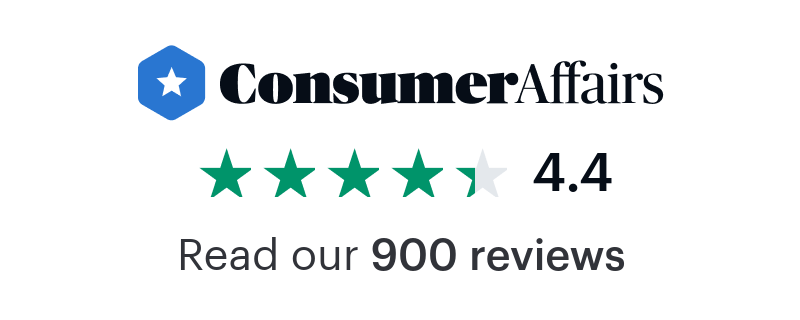Table of Contents
- Understanding Title Loans
- What is a Title Loan Rollover?
- Risks and Consequences of Title Loan Rollovers
- Alternatives to Title Loan Rollovers
- Exploring Personal Loans and Other Financing Methods
- Tips for Managing Title Loans Responsibly
- Conclusion About Rollovers
- Establishing a Budget for Loan Repayment
- Communicating with Lenders About Repayment Options
- Understanding the Loan Agreement and Terms
You took out a car title loan to solve a financial emergency. The lender quickly approved you, and your cash was available the next day. It was great.
Unfortunately, you won’t have enough money to make a loan payment by the due date. For more time, and to avoid repossession of your vehicle, you’re considering rolling over your title loan. But do you understand the ins and outs of title loan rollovers? Here’s what you should know.
Understanding Title Loans
A car title loan is a type of secured loan where a borrower uses their vehicle’s title as collateral, allowing them to potentially get cash quickly, even with damaged credit.
To qualify, the borrower must own their vehicle free and clear or have significant equity in it.1 The lender holds the title while the loan is open, and the borrower can continue to drive their vehicle, as long as they’re current with payments.
Borrowers can use title loans for any personal or household needs. Borrowers commonly use them to handle unexpected costs such as medical bills, moving expenses, emergency vet care, legal fees, or funeral costs. Some might even use them to help with a rent payment, or to cover past-due utility bills.
What is a Title Loan Rollover?
A loan rollover occurs when the borrower extends or renews a loan instead of paying the loan in full when it comes due.
How Do Title Loan Rollovers Work?
With title loan rollovers, the borrower extends their loan due date if they cannot pay the loan when it’s due. Rather than paying off the principal, the borrower pays the fees that are due plus an added fee to extend the loan period. Rollovers are most commonly used with auto title loans that have a very short loan term.
For example, if a borrower takes out a $1,000 title loan for 30 days with a 25% finance fee, they must pay $1,250 on the due date. If the borrower rolls over the loan for another 30 days, they will face another $250 fee, bringing the amount owed to $1,500.
Note that some states limit or prohibit loan rollovers.

Call Our Team
Take the first step and call our toll-free hotline to speak with a specialist.
Potential Benefits of Rolling Over a Title Loan
For borrowers, there are multiple potential advantages to rolling over a car title loan, including:
- Avoidance of immediate default or repossession
- More time for loan repayment
- Fee payments that are more manageable than paying off the loan
Risks and Consequences of Title Loan Rollovers
Besides their potential benefits, car title loan rollovers can have significant drawbacks that borrowers should be aware of.
Debt Cycles Associated with Rollovers
Debt cycles can occur when borrowers cannot repay the title loan by the due date and instead choose to “roll over” or extend the loan. Each rollover adds new fees and interest without reducing the original principal amount owed. With every extension, fees can accumulate quickly, increasing the loan’s total cost while the borrower continues to owe the original amount.
This cycle can trap borrowers in a long-term debt situation, which can ultimately result in vehicle repossession if the borrower misses payments. What’s more, the borrower may still owe money after the lender has sold the vehicle.
Title Loan Rollovers Increases Interest and Fees
Title loan rollovers do result in increased interest charges and fees. When a borrower cannot repay their loan by the due date and chooses to roll it over, the lender extends the payment date with more interest and fees.
This means that borrowers pay new fees and interest on the existing principal without reducing it, which can often lead to a cycle of increasing debt.
The Impact of Rollovers on Vehicle Ownership and the Risk of Repossession
Title loan rollovers can markedly affect vehicle ownership and increase the risk of repossession. They extend the lender’s lien on the vehicle, prolonging the period during which the borrower does not have clear, lien-free ownership.
With each rollover, the debt grows, making it increasingly difficult for the borrower to catch up and satisfy the loan. The lender has the legal right to repossess the vehicle if the borrower defaults on any payments, including those during rollover periods.
Alternatives to Title Loan Rollovers
Options for Refinancing Your Title Loan
Instead of rolling over the loan with the existing lender, title loan borrowers can consider refinancing their loan with a different lender. Refinancing means replacing an existing title loan with a new one to get more favorable loan terms and conditions.1 That can mean a lower interest rate, extended repayment period, or access to more funds. With title loans serviced by LoanMart, borrowers can have access to a simple and convenient process to refinance their title loan.1
Exploring Personal Loans and Other Financing Methods
Rather than roll over their title loan, borrowers can consider obtaining other loans, or accessing other financing methods. For example, borrowers can consider:
- Getting a personal loan (if the borrower has sufficient credit)
- Negotiating directly with the lender
- Borrowing from friends or family
- Selling the vehicle to pay off the loan
Creating a Repayment Plan to Avoid Rollovers
Establishing a repayment plan to avoid rollovers involves strategic debt management. This means reducing the loan principal incrementally and minimizing the need to repeatedly extend loan deadlines.
Key steps to create a viable repayment plan include:
- Developing a tiered payment schedule that systematically lowers the outstanding balance
- Budgeting effectively to ensure timely payments can be made
- Negotiating with lenders for modified terms, if needed
- Automating payments and using financial tools to help prevent missed due dates
Tips for Managing Title Loans Responsibly
Establishing a Budget for Loan Repayment
To create a budget for title loan repayment, borrowers should:
- First assess their financial situation including income, expenses, and other debts
- Create a tailored, detailed budget that includes all monthly expenses and sets aside a specific amount for the payment that covers the principal and interest
- Prioritize making on-time payments, cutting unnecessary expenses, and building an emergency fund to manage unexpected costs
Strategies such as rounding up payments or making extra payments can help pay off the loan faster and reduce interest costs.
Communicating with Lenders About Repayment Options
Borrowers who are having trouble managing their title loan payments should contact their lender or loan servicer right away and honestly discuss their situation. They may be able to obtain a new payment schedule that’s based on their current financial circumstances.
Understanding the Loan Agreement and Terms
Before taking out a loan, it’s crucial for borrowers to understand their loan agreement. The contract outlines the loan amount, interest rate, applicable fees, and repayment schedule. It also details the lender’s right to repossess and sell the secured vehicle if the borrower misses payments.
Conclusion About Rollovers
Before rolling over their title loan, borrowers should understand what this strategy entails as well as its potential benefits and drawbacks. They should make sure they have a loan repayment plan and a budget, and that their spending is under control.
If you are currently considering a title loan rollover with another lender, consider applying for a title loan serviced by LoanMart.1

